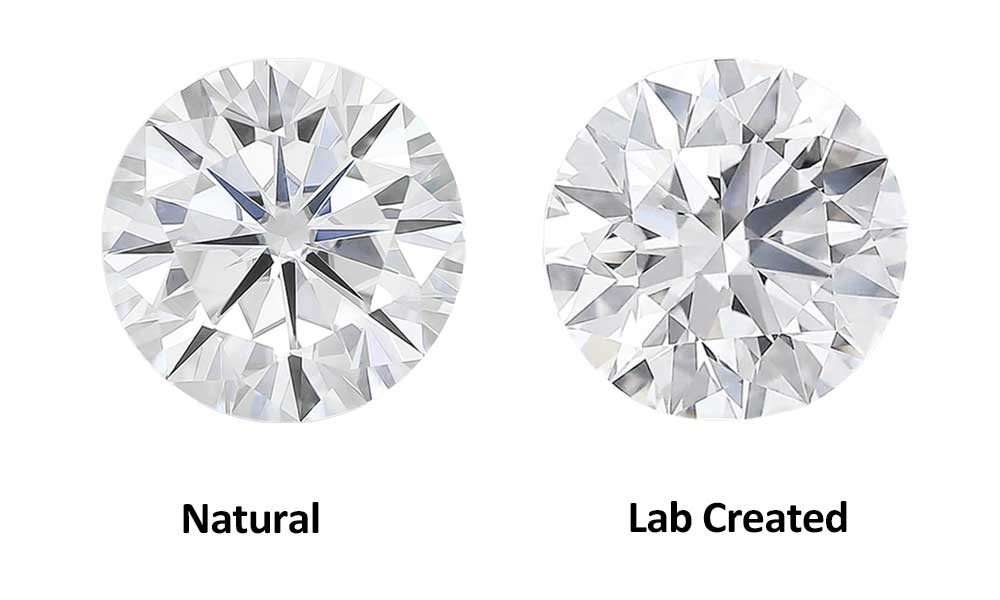When it comes to choosing a diamond, one of the most common questions people ask is, “What’s the difference between lab grown diamonds vs real diamonds?” With growing interest in ethical sourcing and sustainability, many people are turning to lab grown diamonds as a viable option. These diamonds have been gaining popularity for their quality, price, and environmental benefits. In this article, we’ll explore the key differences, advantages, and disadvantages of lab grown diamonds, and help you understand why more people are choosing them over traditional mined diamonds.
What Are Lab Grown Diamonds?
Lab grown diamonds, also known as synthetic or man-made diamonds, are created in controlled environments using advanced technological processes that replicate the natural conditions under which diamonds form in the Earth. These diamonds are chemically, physically, and optically identical to natural diamonds, which is why they are often referred to as “real diamonds” in every meaningful way.
There are two primary methods used to create lab grown diamonds: the High Pressure High Temperature (HPHT) method and the Chemical Vapor Deposition (CVD) method. Both methods mimic the extreme conditions of the Earth’s crust, resulting in diamonds that are virtually indistinguishable from those found in nature.
The Truth About Lab Grown Diamonds vs Real Diamonds
While lab grown diamonds are technically “real” diamonds, there are distinct differences between them and their mined counterparts that can influence your purchasing decision. One of the most significant factors that set lab grown diamonds apart from mined diamonds is their origin. Mined diamonds are extracted from deep within the Earth, a process that can be environmentally damaging and often involves exploitative labor practices. On the other hand, lab grown diamonds are produced in a lab with a smaller environmental footprint and without the ethical concerns associated with traditional mining.
Environmental Impact
Lab grown diamonds have a significantly lower environmental impact than mined diamonds. The diamond mining process is energy-intensive, often resulting in soil erosion, water contamination, and habitat destruction. Lab grown diamonds, by contrast, are created with much less energy and without the extensive environmental degradation associated with mining.
In addition to the environmental benefits, lab grown diamonds do not contribute to the negative social issues sometimes linked to diamond mining, such as human rights violations and funding conflict. This makes lab grown diamonds an attractive alternative for consumers who prioritize sustainability and ethical sourcing in their purchasing decisions.
Price Comparison
One of the most appealing advantages of lab grown diamonds is their price. Lab grown diamonds can be up to 40-50% less expensive than natural diamonds of similar size and quality. This is because they bypass the costly mining process and are produced in a more controlled environment. The reduced cost makes lab grown diamonds an excellent option for those who want the appearance and properties of a diamond without the hefty price tag.
Quality and Durability
Many people are concerned about the quality of lab grown diamonds, assuming they might be inferior to mined diamonds. However, this is far from the truth. Lab grown diamonds are virtually identical to mined diamonds in terms of appearance, durability, and chemical composition. They are graded using the same 4Cs—cut, color, clarity, and carat weight—as natural diamonds, and many lab grown diamonds score highly in these categories.
Lab grown diamonds are also just as durable as natural diamonds. Both types of diamonds are made of pure carbon, which gives them their signature hardness and ability to withstand scratching. Whether you choose a lab grown or natural diamond, you can rest assured that it will stand the test of time.
The Benefits of Choosing Lab Grown Diamonds
Ethical Sourcing
One of the most significant selling points of lab grown diamonds is their ethical sourcing. Unlike mined diamonds, which can be associated with unethical labor practices and conflict financing, lab grown diamonds are produced under controlled and transparent conditions. This means that consumers can purchase lab grown diamonds with peace of mind, knowing they have made an ethical choice.
Customization Options
Lab grown diamonds also offer more flexibility when it comes to customization. Because they are created in a lab, jewelers have more control over the size, color, and clarity of the diamond. As a result, lab grown diamonds can be tailored to meet your exact specifications, making them an excellent choice for those seeking a personalized piece of jewelry.
Wider Availability
Lab grown diamonds are not constrained by the geographical limitations of mining operations, which means they are often more widely available than natural diamonds. This increased availability can make it easier to find a diamond that fits your needs, whether you’re looking for a specific size, shape, or color.
How to Choose Between Lab Grown Diamonds vs Real Diamonds
Choosing between a lab grown diamond and a mined diamond ultimately comes down to your personal preferences, values, and budget. If you’re looking for a more affordable option without compromising on quality, a lab grown diamond may be the ideal choice for you. On the other hand, if you prefer the traditional appeal of a natural diamond, then a mined diamond might be the way to go.
If ethical sourcing, environmental impact, and price are important factors in your decision-making process, lab grown diamonds offer a compelling alternative to mined diamonds. With their stunning beauty, durability, and affordability, they are becoming an increasingly popular choice among consumers who want the best of both worlds—an ethically sourced, high-quality diamond at a more accessible price point.
Conclusion
In the debate of lab grown diamonds vs real diamonds, the decision ultimately comes down to personal choice. Both options offer their own set of advantages, from cost savings and ethical sourcing to quality and durability. Lab grown diamonds provide an excellent alternative for those who value sustainability and want a diamond that is both beautiful and affordable. As lab grown diamonds continue to gain popularity, it’s clear that they will play an increasingly significant role in the future of the diamond industry.
Whether you choose a lab grown diamond or a traditional mined diamond, the most important thing is that you select a diamond that aligns with your values and preferences. With their breathtaking beauty and ethical appeal, lab grown diamonds are undoubtedly an option worth considering in your search for the perfect diamond.









